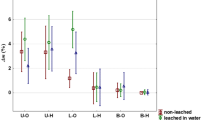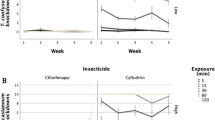Abstract
THE problem of protecting wool from insect attack has received considerable attention in the past. Methods of temporary protection are available using insecticides such as silico-fluorides, DDT and ‘Gammexane’; but these are not fast to processes such as continued washing or dry-cleaning. Several types of chlorinated aromatic sulphonic acids are commercially available which combine with wool from the dye-bath to give a satisfactory permanent result1. The industrial application of such methods has been limited, due probably to the fact that the amounts required (at least 1 per cent of the weight of wool) can result in a treatment which is considered to be too expensive.
This is a preview of subscription content, access via your institution
Access options
Subscribe to this journal
Receive 51 print issues and online access
$199.00 per year
only $3.90 per issue
Buy this article
- Purchase on Springer Link
- Instant access to full article PDF
Prices may be subject to local taxes which are calculated during checkout
Similar content being viewed by others
References
Clark, J. Soc. Dyers and Color., 59, 213 (1943). Lauger, Helv. Chim. Acta, 27, 71 (1944).
Author information
Authors and Affiliations
Rights and permissions
About this article
Cite this article
LIPSON, M., HOPE, R. Use of ‘Dieldrin’ to protect Wool against Insect Attack. Nature 175, 599–600 (1955). https://doi.org/10.1038/175599a0
Issue Date:
DOI: https://doi.org/10.1038/175599a0
Comments
By submitting a comment you agree to abide by our Terms and Community Guidelines. If you find something abusive or that does not comply with our terms or guidelines please flag it as inappropriate.



